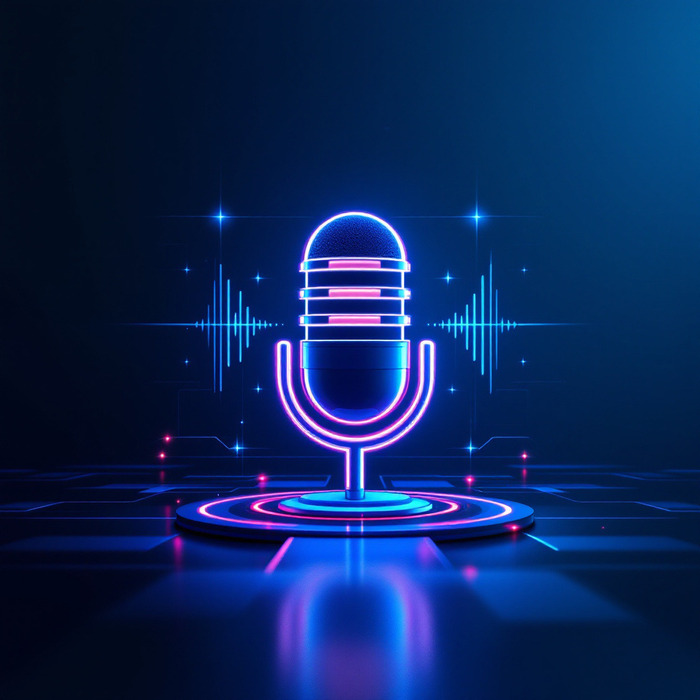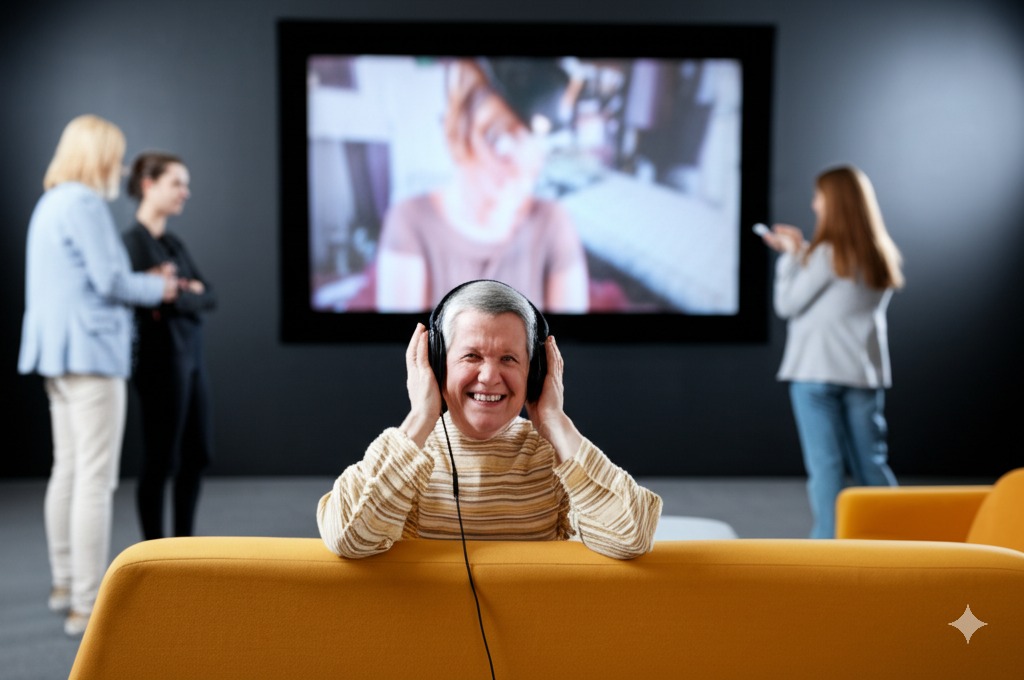
AI audio description in film and television is opening up a whole new world for people who can’t see the screen well.
Watching your favorite show becomes very different when you can’t see what’s happening on screen. For people with visual impairments, movies or TV shows present real challenges. They can hear characters talking but miss many visual elements – a surprised expression, an object that matters to the plot, or a location that helps tell the story. Without these details, they don’t get the complete experience.
That’s where audio description comes in – it’s when someone describes the important visual parts during pauses in talking. The problem? Making these descriptions with human narrators is expensive and takes forever.
Enter AI audio description in film and television. This technology is changing how we make visual content accessible. It’s faster, cheaper, and might even offer some cool benefits that traditional methods don’t.
In this post, we’ll look at how AI voice for film and TV is changing the game for audio description, why it matters, and some real examples of it in action. We’ll also talk about the bumps in the road and what might be coming next as the technology gets better.
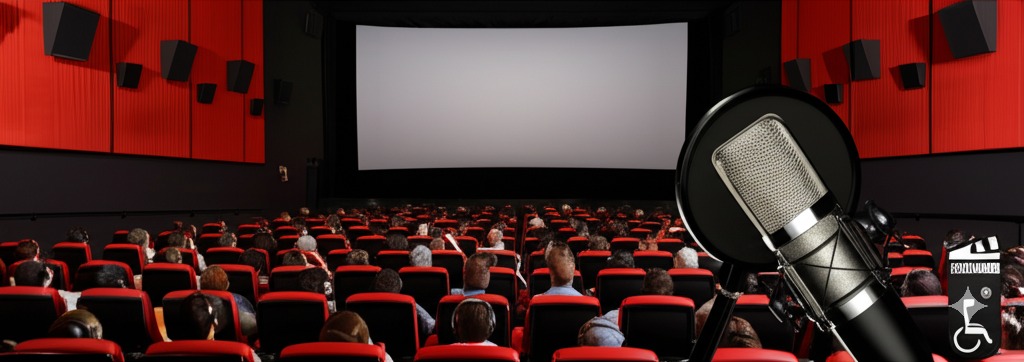
Traditional Audio Description: How It Works and Its Limits
Audio description helps blind and low-vision people access visual media. It works by adding spoken descriptions of what’s happening on screen when there’s no dialogue.
How Traditional Audio Description Works
Traditional audio description for blind viewers involves several steps:
- Writers create scripts describing key visual elements
- Voice actors record these descriptions in a studio
- Sound engineers mix the descriptions with the original audio
- The final product goes through quality checks
In the US, the 21st Century Communications and Video Accessibility Act requires certain TV programs to include audio description. Broadcasters use the Secondary Audio Program (SAP) channel to deliver these narrated descriptions.
The Limits of Traditional Methods
The old way of creating audio descriptions comes with several problems:
- Time-consuming process – from writing scripts to recording and editing
- High costs – paying writers, voice actors, and studio time adds up quickly
- Limited availability – many smaller productions can’t afford to create descriptions
- Scheduling issues – coordinating voice actors and studios causes delays
- Publishing hurdles – not all video platforms support audio description well
These limitations mean that many visually impaired people still can’t access a lot of visual content, creating an accessibility gap in entertainment.
The Tech Behind AI Audio Description in Film and Television
AI audio description in film and television relies on two main technologies: text-to-speech and neural voice synthesis.
Text-to-Speech (TTS)
Text-to-speech film technology turns written words into spoken language. Modern TTS has come a long way from the robot-like voices of early systems. Today’s AI-powered TTS analyzes:
- How words are pronounced
- Natural speech patterns
- Proper pacing and pauses
- Correct emphasis on different words
This results in speech that sounds much more natural and easy to listen to over extended periods, which is perfect for how to use AI text-to-speech for podcast content and similar applications.
Neural Voice Synthesis
Neural voice synthesis television takes TTS to the next level by using deep neural networks to create even more lifelike voices. These systems:
- Analyze vast amounts of human speech data
- Create detailed models of how speech works
- Generate voices that mimic human speaking patterns
- Add subtle variations in tone and delivery
The result is synthetic speech that’s becoming harder to distinguish from human voices. Some systems can even convey different emotions and speaking styles.
How AI Audio Description Works in Practice
The process of creating AI voice technology audio description combines several AI technologies:
- Visual Analysis – AI examines the video content, identifying objects, people, actions, and scene changes
- Description Generation – The system creates written descriptions of key visual elements
- Voice Creation – Text-to-speech or neural voice synthesis turns these descriptions into spoken words
- Audio Integration – The AI places these spoken descriptions between dialogue at appropriate times
This automated audio description process addresses many of the challenges faced by traditional methods while opening up new possibilities.
Benefits of Using AI Voice Technology for Audio Description
The shift to AI audio description in film and television offers several key advantages:
Speed and Efficiency
AI can generate audio descriptions much faster than human teams:
- No waiting for voice actor availability
- Automated processes reduce production bottlenecks
- Changes and updates can be made quickly
- Large volumes of content can be processed simultaneously
This speed helps media companies meet tight deadlines and accessibility requirements without delays.
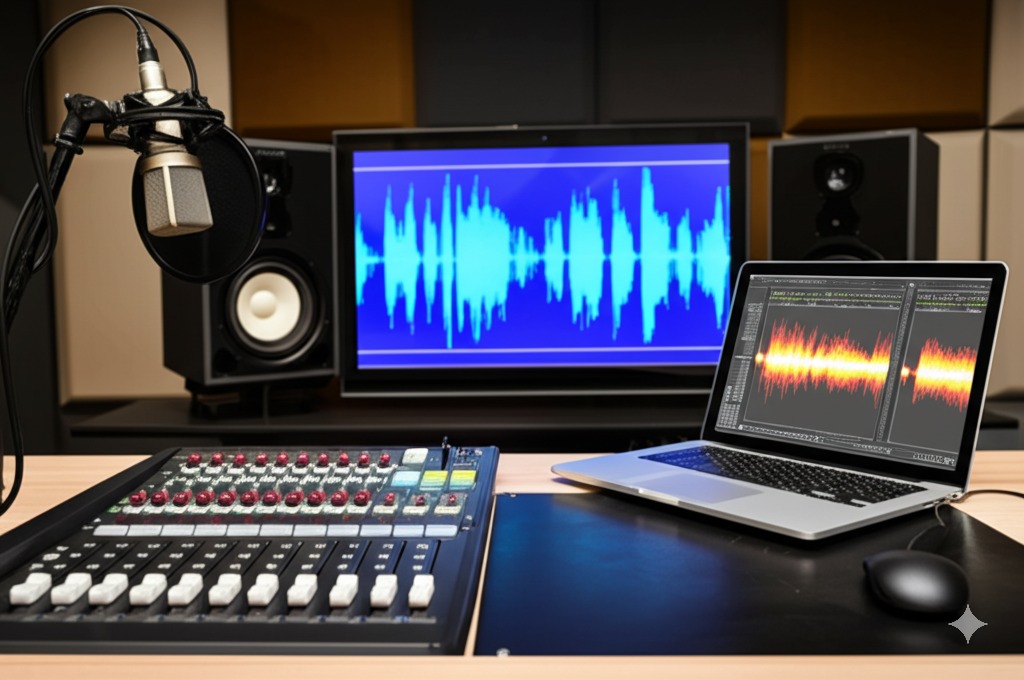
Cost Reduction
AI audio description significantly cuts costs:
- No studio rental fees
- No voice actor payments
- Fewer human hours in the production process
- Lower costs make audio description accessible to smaller productions
Many wonder what are the benefits of using AI for audio description in television shows? Beyond cost savings, there’s consistency across episodes and the ability to quickly update descriptions when needed.
Personalization Options
One of the most exciting aspects of AI text-to-speech for fiction books and media is the ability to personalize the experience:
- Viewers can select their preferred voice type
- Description detail levels can be adjusted
- Narration speed can be controlled by the user
- Language preferences can be accommodated more easily
This customization creates a more tailored experience for each viewer based on their specific needs and preferences.
Multilingual Support
AI voice technology makes it easier to create audio descriptions in multiple languages:
- The same visual analysis can generate descriptions in different languages
- No need to hire voice actors for each language
- Consistent quality across all language versions
- Wider global accessibility
This benefit is particularly valuable for international content and streaming platforms serving diverse audiences.
Emotional Nuance
Advanced synthetic voice accessibility is starting to convey subtle emotional tones:
- Voice can match the mood of a scene
- Tension in suspenseful moments
- Warmth during emotional scenes
- Better storytelling through appropriate vocal delivery
This ability to include emotional context helps create a more immersive experience for visually impaired viewers.
Real Examples of AI Audio Description in Film and Television
Several companies are already putting AI audio description into practice:
Audible Sight
Audible Sight offers an AI-powered audio description tool that:
- Automatically breaks videos into scenes
- Generates text descriptions of visual content
- Converts descriptions to speech using realistic synthetic voices
- Helps content creators comply with accessibility guidelines
The software focuses on making audio description affordable for a wider range of content creators.
YuJa
YuJa has developed AI-Generated Enhanced Audio Description technology that:
- Automatically generates narrative descriptions
- Pauses video playback for more detailed explanations
- Combines AI with human verification for quality control
- Helps educational institutions meet accessibility requirements
This hybrid approach balances the efficiency of AI with the quality assurance of human oversight.
Voice Technology Platforms
When looking for the best AI text-to-speech software for audio description, several platforms stand out:
-
Murf.ai – Used by production companies to deliver voice content in multiple languages
-
Lovo.ai – Creates explanatory narration for various types of video content
-
Voiceovermaker.io – Generates voiceovers for YouTube content and AI voice actors in animation
-
FILKI.AI – Combines text-to-video and text-to-speech capabilities
-
Speechify – Offers AI voiceover generation for narrating videos
These platforms provide the underlying technology that makes AI audio description in film and television possible.
Video Accessibility Solutions: Beyond Basic Description

Modern AI in media accessibility goes beyond just describing what’s on screen:
- Context-aware descriptions – AI can prioritize elements that matter to the plot
- Timed descriptions – Perfect synchronization with the visual content
- Seamless integration – Descriptions that blend naturally with original audio
- Cross-platform compatibility – Works across different viewing platforms
These advancements make text-to-speech solutions for visual impairment more effective than ever before.
Challenges and Limitations of AI Audio Description
Despite its advantages, there are clear challenges of implementing AI audio description:
Emotional Expression Limitations
While AI voices are improving, they still struggle with:
- Conveying complex emotional states
- Matching the full range of human expressiveness
- Drawing from lived experiences to inform delivery
- Adapting tone perfectly to match visual content
Human voice actors bring creative interpretation that current AI can’t fully match.
Accuracy and Context Issues
AI sometimes misses important contextual elements:
- Cultural references may be missed or misinterpreted
- Subtle visual cues might be overlooked
- The significance of certain objects or actions may not be captured
- Understanding of narrative structure can be limited
This is why human review of AI-generated descriptions remains important for quality control.
Training Data and Bias
The quality of AI audio description depends heavily on its training data:
- Biases in training data can appear in descriptions
- Certain demographics or cultural contexts may be poorly represented
- Technical limitations based on the variety of training examples
- Risk of inappropriate or inaccurate descriptions
Addressing these biases is essential for creating fair and inclusive media experiences.
Ethical Implications of AI Voiceovers for Visually Impaired Viewers
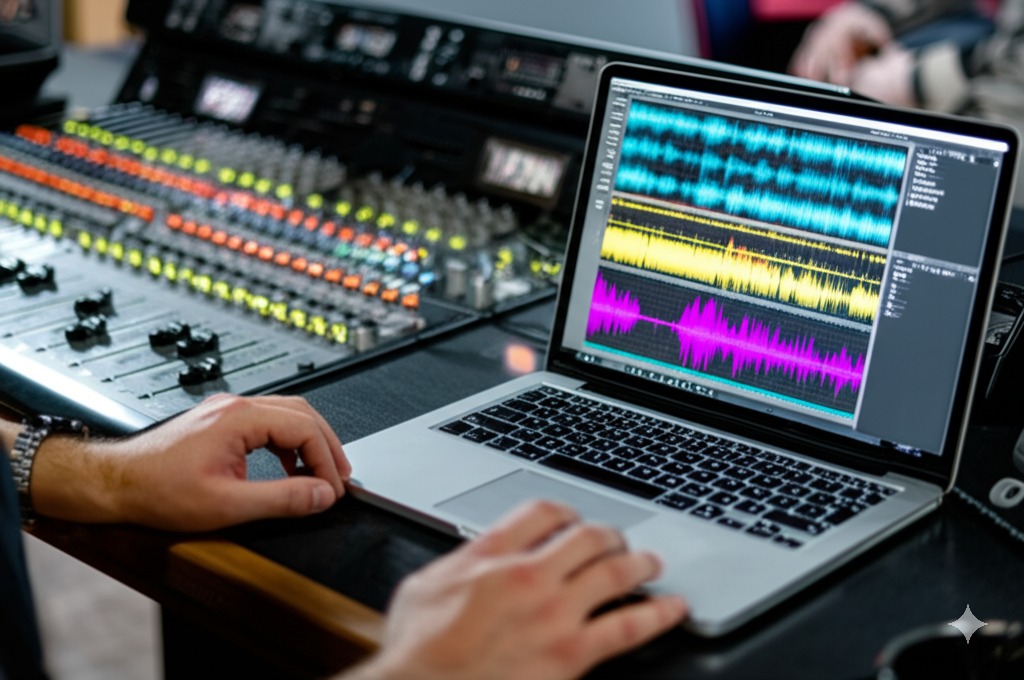
The use of AI audio description in film and television raises several ethical questions:
Impact on Human Voice Actors
As with many AI applications, there are concerns about job displacement:
- Reduced demand for human voice actors in audio description
- Changes to the voice acting profession
- Potential new roles in AI voice training and quality control
- Questions about fair compensation for voice actors whose styles inform AI
Some voice actors see AI as a tool to expand their reach through voice banking and licensing, while others worry about their future in the industry.
Quality and Accessibility Standards
There’s a need to maintain high standards:
- Ensuring AI-generated descriptions are accurate and helpful
- Preventing misinformation or misleading descriptions
- Creating guidelines specific to AI audio description
- Making sure the technology truly serves visually impaired audiences
These standards help ensure that AI audio description actually improves accessibility for visually impaired viewers rather than just checking a compliance box.
Transparency
Users should know when they’re listening to AI-generated descriptions:
- Clear labeling of AI-generated content
- Information about how the descriptions were created
- Options to choose between AI and human narration when available
- Building trust through openness about technology use
This transparency allows viewers to make informed choices about the content they consume.
The Future of AI Audio Description in Film and Television

The field of AI audio description continues to develop rapidly. Here are some trends to watch:
Better Scene Recognition
AI is getting better at understanding visual content:
- More accurate identification of objects and actions
- Better recognition of emotional states from visual cues
- Improved understanding of cinematography techniques
- More contextual awareness of what’s important in a scene
Many wonder: how can AI voice technology improve audio description in movies? Advanced scene recognition will allow for more detailed and relevant descriptions that capture the director’s intent and cinematography choices.
Interactive Audio Experiences
Future systems may offer more interactivity:
- Users could ask for more details about specific elements
- Adjustable levels of description detail in real-time
- Integration with AI text-to-speech mobile accessibility features
- Spatial audio elements to create more immersive experiences
This interactivity would give users more control over their viewing experience.
Even More Natural Voices
Synthetic voices will continue to improve:
- Greater range of emotional expression
- More subtle vocal nuances
- Better handling of different languages and accents
- More variety in voice options
As the quality gap between AI and human narration narrows, AI audio description will become an even more viable option.
AI-Human Collaboration
Rather than replacing humans entirely, the future likely involves collaboration:
- AI handling routine description tasks
- Human experts focusing on quality control and complex scenes
- AI tools that assist human describers
- Hybrid workflows that leverage the strengths of both
This collaboration could create better audio descriptions while maintaining the human touch where it matters most.
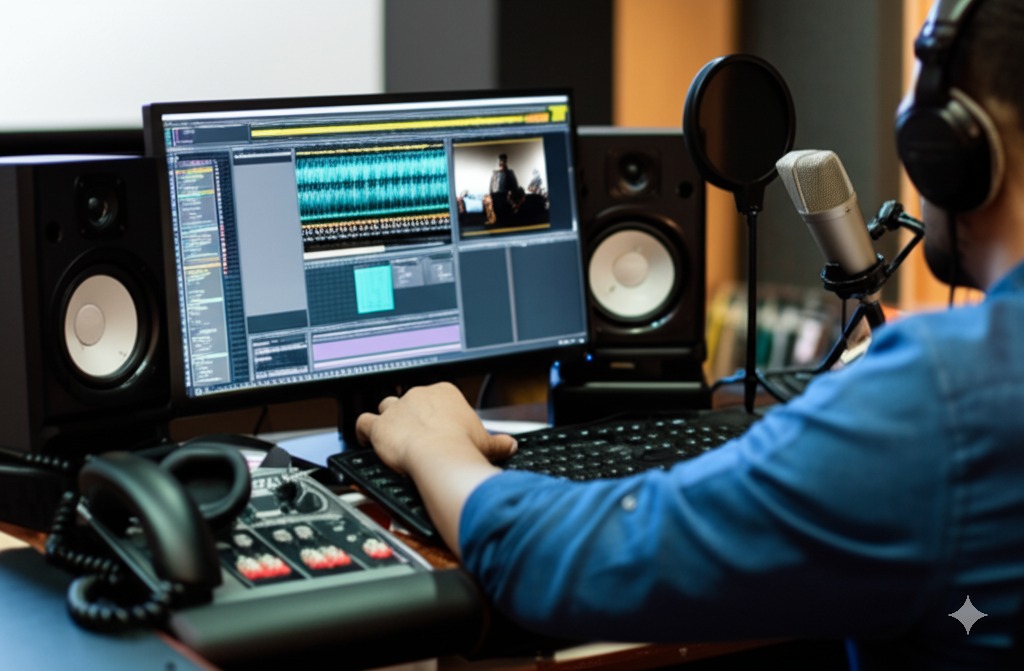
Conclusion: The Transformative Potential of AI Audio Description in Film and Television
AI audio description in film and television is changing the game for people who can’t see the screen. It’s taking something that used to be rare, expensive, and slow to make, and turning it into something that more shows and movies can include.
The old way of doing things left many visually impaired people without access to lots of visual content. But with AI voice for film and TV, that’s starting to change. More content creators can now add audio descriptions without breaking the bank or missing deadlines.
Are there still some bumps in the road? Sure. AI voices don’t always nail the emotional parts, and sometimes they miss important details that human describers would catch. But the technology keeps getting better, and it’s opening doors to more inclusive media for everyone.
The cool thing is that we don’t have to choose between AI and humans. The best solutions will probably use both – letting AI handle the basic stuff while humans add the special touch where it matters most. As AI audio description in film and television keeps improving, more people with visual impairments will be able to enjoy the same movies and shows as everyone else – and that’s something worth getting excited about.
FAQs About AI Audio Description in Film and Television
What is AI voice technology?
AI voice technology uses artificial intelligence to convert text into spoken words, also known as text-to-speech (TTS), and to generate realistic and natural-sounding voices through neural voice synthesis.
How is AI voice technology used for audio description?
AI algorithms analyze visual content and generate text descriptions, which are then converted into audio using AI voice technology, providing spoken narration of on-screen elements for visually impaired audiences.
What are the benefits of using AI for audio description?
Benefits include increased efficiency, faster turnaround times, reduced costs compared to human narration, and the potential for personalized audio experiences and multilingual support.
What are the limitations of AI in audio description?
Limitations include the difficulty in replicating nuanced emotional expression, the need for human oversight to ensure accuracy and context, and potential biases in AI models.
Will AI replace human voice actors in audio description?
While AI may automate some aspects of audio description, human expertise remains valuable for complex emotional performances and ensuring quality and accuracy. A collaborative approach is likely, with AI assisting human describers.
Which AI software can be used for audio description?
Platforms like Audible Sight, YuJa, murf.ai, lovo.ai, voiceovermaker.io, FILKI.AI, and Speechify offer AI voice technology that can be utilized for creating audio descriptions.
What are the ethical considerations of using AI in audio description?
Ethical considerations include the impact on human voice actors, maintaining quality and accessibility standards, ensuring transparency about AI usage, and addressing data privacy concerns.
What are the future trends in AI audio description?
Future trends include greater integration with scene recognition, the development of dynamic and interactive audio experiences, improved quality and expressiveness of synthetic voices, and increased personalization.
Sources
- https://www.fcc.gov/consumers/guides/audio-description
- https://top5accessibility.com/blog/audio-description-inclusive-access-to-visual-media/
- https://adp.acb.org/docs/Beginners-Guide-to-Audio-Description.pdf
- https://en.wikipedia.org/wiki/Audio_description
- https://www.fringeofcolour.co.uk/responses/screen-representation-through-audio-description-thomas-reid
- https://www.yuja.com/blog/the-role-of-audio-descriptions-in-accessibility/
- https://www.3playmedia.com/learn/popular-topics/audio-description/

